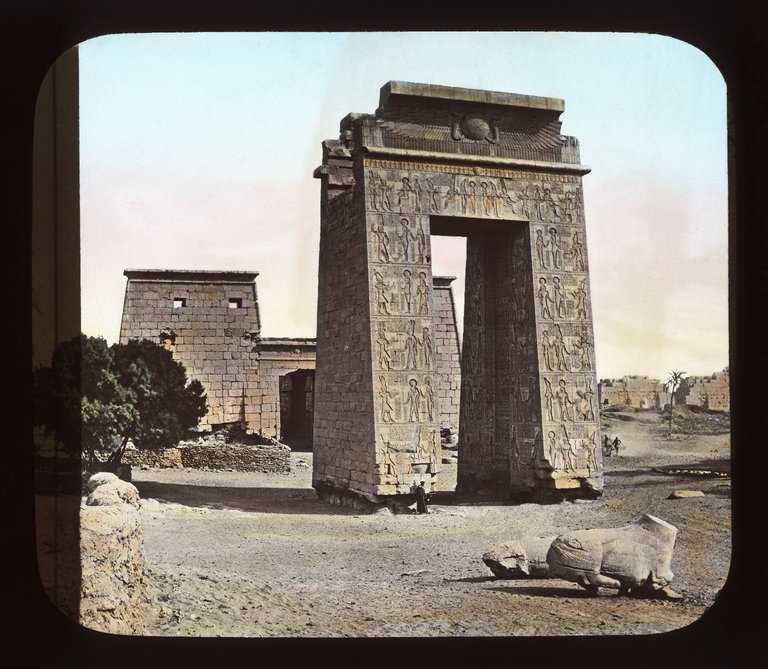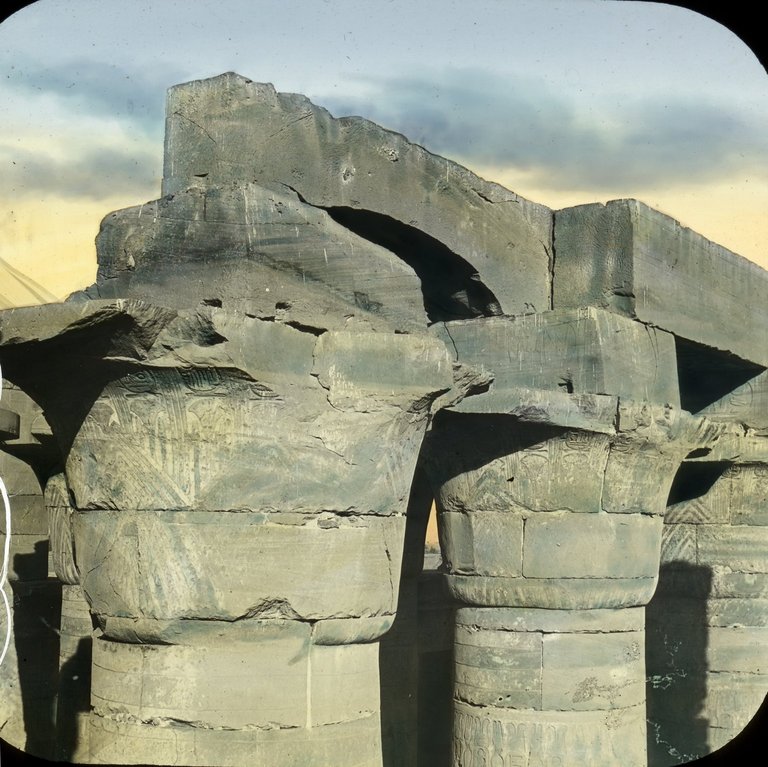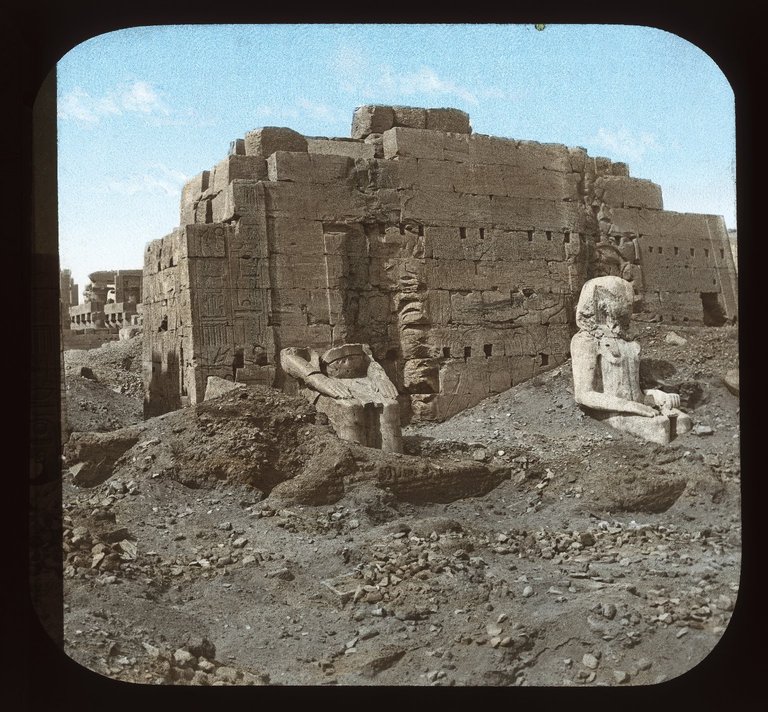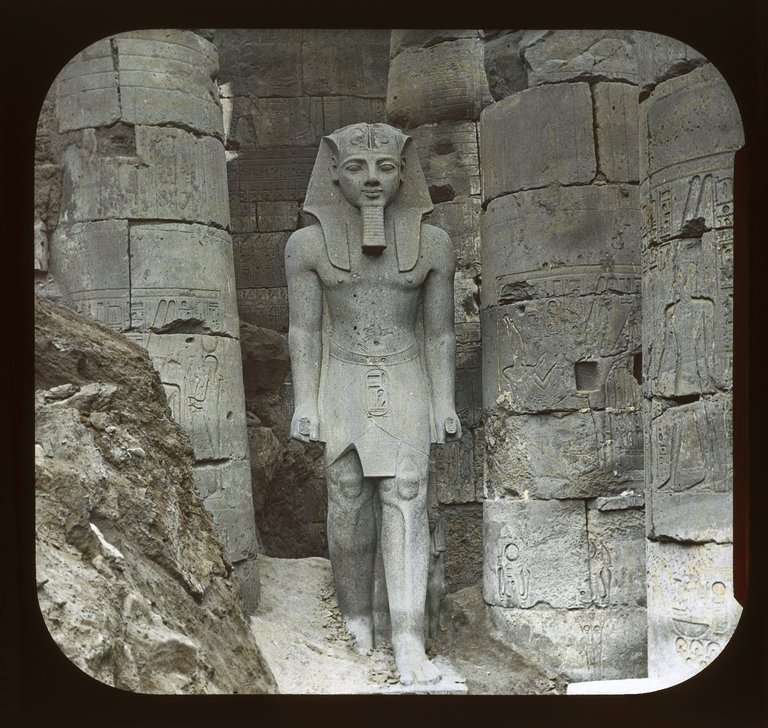Somewhere along the way, and a few thousand years, monuments such as Karnak fell into disrepair. Between the ever relentless sands of the desert reclaiming its territory, the Nile’s inundation, and the passage of time, they almost faded out of memory. Every now and then through the millenia, travellers and explorers would stumble upon an obelisk here, or statue there, and if they were persistant and lucky enough, maybe a pylon and gate into a mysterious past.
As much as travellers today would still be in awe of places like Karnak and Luxor temples – or any other monument like them in the world – the glamour of discovery is all but gone, a lot tourists are now just that… Tourists. From Taj Mahal to the Great Wall to Machu Pichu, they are just places in someone’s wish list, and once they’ve been there, they can go back home with the t-shirt.
Dr. Clair Russell Ossian, a professor of Geology at Tarrant County College in Hurst, Texas, wrote an excellent paper about Karnak titled: Karnak Temple before the French excavators arrived, in it are several accounts of travellers about Karnak from as early as the 1700’s, Here’s how Florence Nightingale, the nursing legend who in 1849 visitied Egypt, saw these magnificent structures:
…No one could trust themselves with their imagination alone there. Gigantic shadows spring up on every side; “the dead are stirred upfor thee to meet thee at thy coming, even the chief ones of the earth”, and they look out from among the columns, and you feel as terror-stricken to be there, miserable intruder, among these mighty dead, as if you had awakened the angel of the Last Day. Imagine six columns oneither side, of which the last is almost out of sight, though they standvery near each other, while you look up to the stars from between them,as you would from a deep narrow gorge in the Alps, and then, passing through 160 of these, ranged in eight aisles on either side, the endchoked up with heaps of rubbish, this rubbish consisting of stones twentyand thirty feet long, so that it looks like a mountain fallen to ruin, not atemple. How art thou fallen from heaven, oh Lucifer, son of the morning! He did exalt his throne above the stars of God; for I looked through a colonnade, and under the roof saw the deep blue sky and a star shiningbrightly; and as you look upon these mighty ruins, a voice seemscontinually saying to you, And seekest thou good things for thyself? Seek them not, for is there ought like this ruin? One wonders that people comeback from Egypt and live lives as they did before. Letters from Egypt: A journey on the Nile, 1849-1850
And if you thought that the sound and light shows were awesome, something that Victorian travellers didn’t have the luxury of, they still found the “Karnak more impressive and exciting by moonlight, and perhaps help start a tradition that lasted all through the Victorian Period. Nightingale enthuses.”
…In the evening we went to Karnak; the night was dark, the moonhad betrayed us. No one can describe the desolation of riding over thedesert by night; at home one’s imagination used to rest in a smooth desert: this was all, as usual, tumbled about; but we could see little. …In this silent procession we followed one the other for about a mile and a half, till we passed under palm trees; and a little farther, a gleam of moonlight shining out, we saw on either side a ghostly avenue, gigantic sitting sphinxes, with their faces toward us, nearly as close as they could be placed, but most of them headless, limbless, or overthrown. “Then we stood under the pylon, whose top reaches heaven; then passed between the propyla into the vast atrium. One single column still stood there, not wringing its hands, but raising its unearthly head among the stars, and watching calmly and ceaselessly the course, not of years, but of periods. Then, climbing over hills and valleys made of ruins, you enter the immeasurable forest of columns; one, which had fallen across its aisle, dragging with it the huge stone which bridged it to the next, was the first thing which gave me the least idea of its vastness. It was too sublime in its ruin for one to dare to give pity. Opposite it, two, which had fallen together, blocked up the space: they cannot, you know, fall to the ground; their weight makes no impression on their brother giants, but the shaken giant leans against his fellow, and has probably leaned there for two thousand years, and will for many more. …Even Roberts’ Karnak gives you not the slightest idea of it, and you know these things are buried almost up to the neck.” Letters from Egypt: A journey on the Nile, 1849-1850
Poetic doesn’t even begin to describe her accounts.

Egypt: Karnak. View of the Karnak temple precinct, gate of Ptolemy III, with the temple of Khonsu in the background by Brooklyn Museum, taken sometime in 1900.












